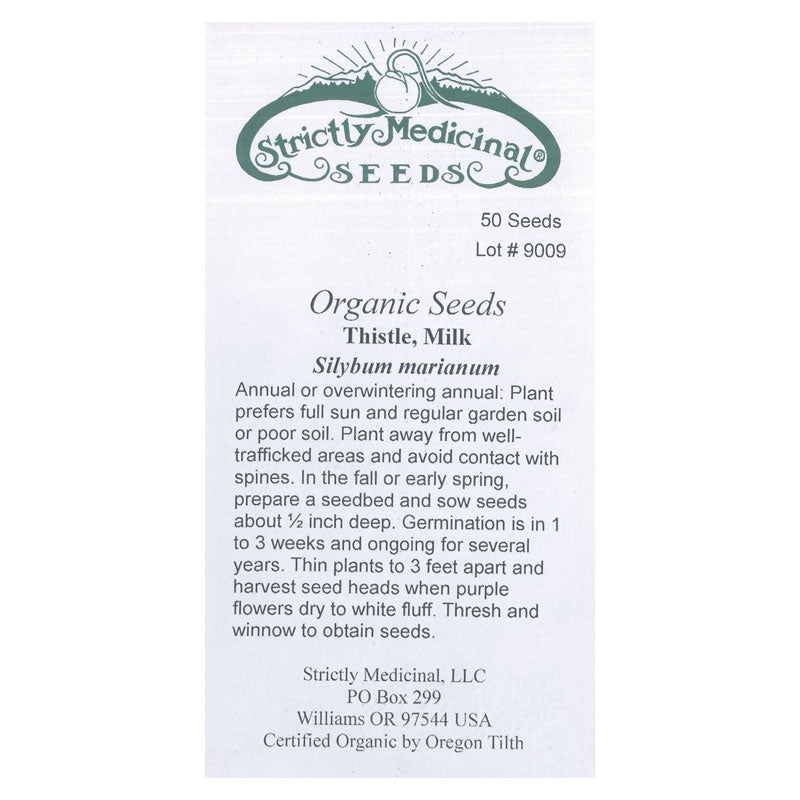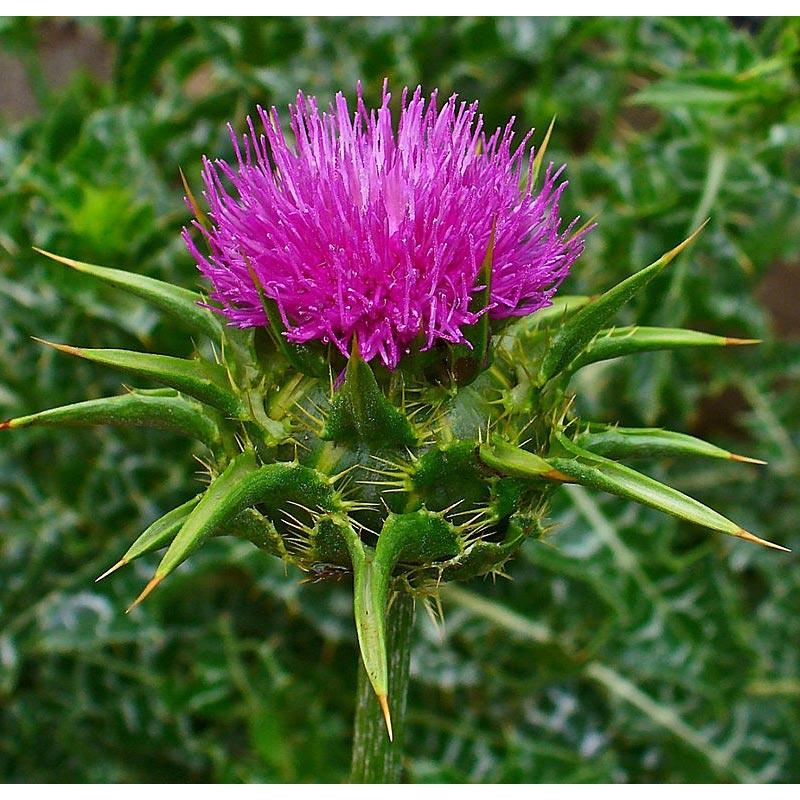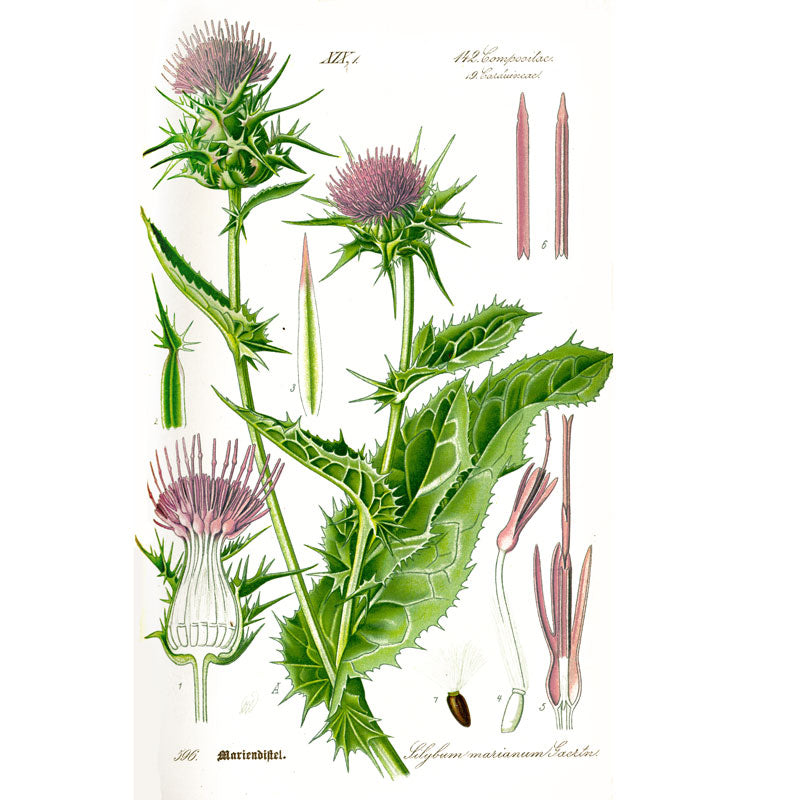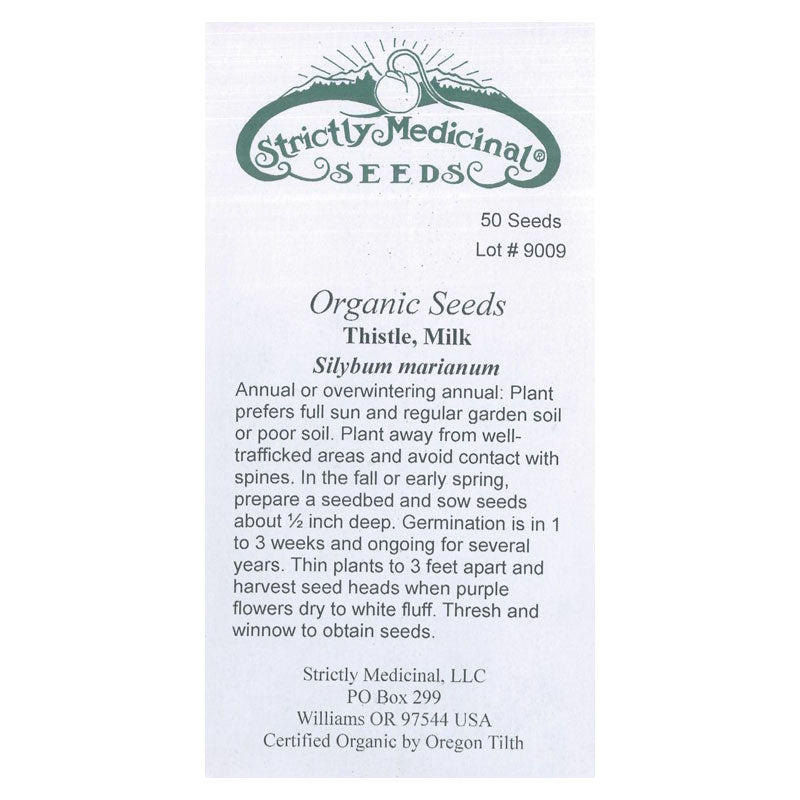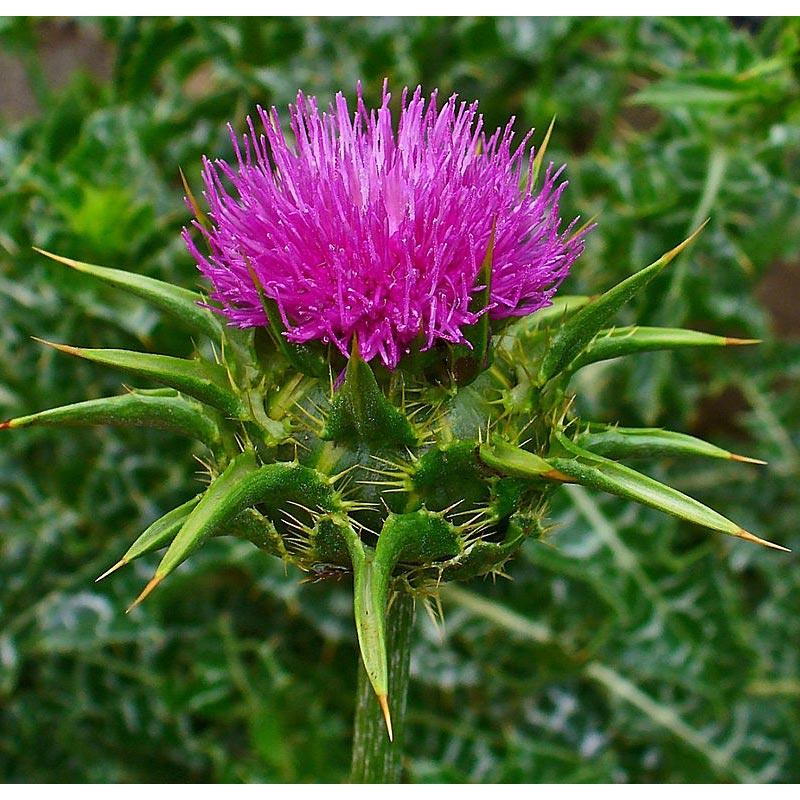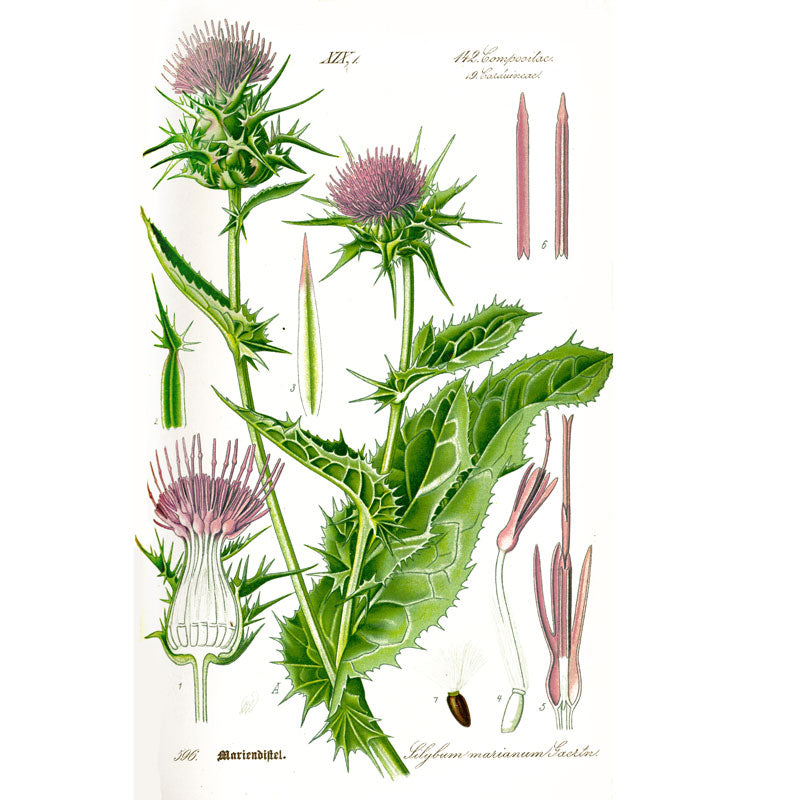Item Number: SNV7072
Milk Thistle Seeds (Organic)
Milk Thistle Seeds (Organic)
Naturalizes Easily
Milk Thistile Silybum marianum
Annual or overwintering annual, native to the Mediterranean and widely naturalized. Giant, shiny-leaved plant with distinct white variegations, producing bright purple flowers that give way to hefty brown-black seeds.
Certified organic, 50 seeds per packet.
Milk thistle is a remarkable herb known for its unique appearance and potential health benefits. Among its many uses, one particularly notable aspect of milk thistle is its seeds.
A Closer Look at Milk Thistle Seeds
Milk thistle seeds are the small, hard fruits of the milk thistle plant, characterized by their glossy, mottled appearance. These seeds have a long history of use, dating back centuries in traditional herbal medicine. While they are primarily renowned for their potential health benefits, it is essential to note that this article will focus on other aspects of milk thistle seeds, such as their culinary uses and growing potential.
Culinary Applications
Milk thistle seeds can be a unique addition to your culinary repertoire. They possess a slightly nutty and bitter flavor profile, making them an intriguing choice for those looking to explore new tastes and textures. Here are some ways you can incorporate milk thistle seeds into your cooking:
Roasted Snacks: Roasting milk thistle seeds can enhance their flavor. Simply toss them with a bit of olive oil and your favorite seasonings, then roast them until they turn golden brown. They make for a nutritious and crunchy snack.
Baking: You can add milk thistle seeds to bread, muffin, or cookie recipes for an extra layer of flavor and a subtle crunch. Keep in mind that their bitter undertone can add depth to your baked goods.
Salad Toppings: Sprinkle milk thistle seeds over salads to give them an interesting twist. They can add both texture and a mild, earthy flavor that complements fresh greens and vegetables.
Growing Milk Thistle
For those interested in gardening, milk thistle can be cultivated from seeds. While it is known for its distinctive appearance and vibrant purple flowers, it's important to remember that milk thistle is a robust, invasive plant that can take over garden spaces if not managed properly. Here are some tips for growing milk thistle:
Choose a Suitable Location: Milk thistle thrives in well-drained soil and prefers full sun. Select a spot in your garden that meets these criteria to ensure optimal growth.
Sow the Seeds: Plant milk thistle seeds directly into the soil in late spring or early summer. Make sure the soil is moist but not waterlogged. Space the seeds about 2 inches apart and cover them with a thin layer of soil.
Maintenance: Milk thistle can grow tall, so consider providing support to prevent them from toppling over. Regular weeding will also be necessary to prevent them from becoming invasive.
Harvesting: The seeds can be harvested once the flower heads have dried and turned brown. Simply cut off the flower heads and hang them upside down to allow the seeds to fully dry. Then, shake or rub the seeds out of the flower heads.
Milk thistle seeds are more than just a potential source of health benefits. They offer a unique culinary experience, with their nutty and slightly bitter flavor. Additionally, for those with a green thumb, growing milk thistle can be an interesting gardening endeavor, provided it is done with care to prevent its invasive tendencies. Whether you choose to enjoy milk thistle seeds in your cooking or embark on the journey of cultivating this fascinating plant, they offer a delightful way to explore new flavors and gardening adventures.
Photo by H. Zell


Check Your Zone Compatibility:
Compatible with your zone.
Growing Zone for
,

Our Guarantee To You
Since 1976, we've served our customers at every stage of growing. Please contact us at any time. We are happy to support and assist you.
Description
Description
Milk Thistile Silybum marianum
Annual or overwintering annual, native to the Mediterranean and widely naturalized. Giant, shiny-leaved plant with distinct white variegations, producing bright purple flowers that give way to hefty brown-black seeds.
Certified organic, 50 seeds per packet.
Milk thistle is a remarkable herb known for its unique appearance and potential health benefits. Among its many uses, one particularly notable aspect of milk thistle is its seeds.
A Closer Look at Milk Thistle Seeds
Milk thistle seeds are the small, hard fruits of the milk thistle plant, characterized by their glossy, mottled appearance. These seeds have a long history of use, dating back centuries in traditional herbal medicine. While they are primarily renowned for their potential health benefits, it is essential to note that this article will focus on other aspects of milk thistle seeds, such as their culinary uses and growing potential.
Culinary Applications
Milk thistle seeds can be a unique addition to your culinary repertoire. They possess a slightly nutty and bitter flavor profile, making them an intriguing choice for those looking to explore new tastes and textures. Here are some ways you can incorporate milk thistle seeds into your cooking:
Roasted Snacks: Roasting milk thistle seeds can enhance their flavor. Simply toss them with a bit of olive oil and your favorite seasonings, then roast them until they turn golden brown. They make for a nutritious and crunchy snack.
Baking: You can add milk thistle seeds to bread, muffin, or cookie recipes for an extra layer of flavor and a subtle crunch. Keep in mind that their bitter undertone can add depth to your baked goods.
Salad Toppings: Sprinkle milk thistle seeds over salads to give them an interesting twist. They can add both texture and a mild, earthy flavor that complements fresh greens and vegetables.
Growing Milk Thistle
For those interested in gardening, milk thistle can be cultivated from seeds. While it is known for its distinctive appearance and vibrant purple flowers, it's important to remember that milk thistle is a robust, invasive plant that can take over garden spaces if not managed properly. Here are some tips for growing milk thistle:
Choose a Suitable Location: Milk thistle thrives in well-drained soil and prefers full sun. Select a spot in your garden that meets these criteria to ensure optimal growth.
Sow the Seeds: Plant milk thistle seeds directly into the soil in late spring or early summer. Make sure the soil is moist but not waterlogged. Space the seeds about 2 inches apart and cover them with a thin layer of soil.
Maintenance: Milk thistle can grow tall, so consider providing support to prevent them from toppling over. Regular weeding will also be necessary to prevent them from becoming invasive.
Harvesting: The seeds can be harvested once the flower heads have dried and turned brown. Simply cut off the flower heads and hang them upside down to allow the seeds to fully dry. Then, shake or rub the seeds out of the flower heads.
Milk thistle seeds are more than just a potential source of health benefits. They offer a unique culinary experience, with their nutty and slightly bitter flavor. Additionally, for those with a green thumb, growing milk thistle can be an interesting gardening endeavor, provided it is done with care to prevent its invasive tendencies. Whether you choose to enjoy milk thistle seeds in your cooking or embark on the journey of cultivating this fascinating plant, they offer a delightful way to explore new flavors and gardening adventures.
Photo by H. Zell
Shipping Information
Shipping Information
Shipping Weight: 0.01 lb
Dimensions: 5.0"L x 2.5"W x 0.1"H
Features
Features
- Attracts Bees/Butterflies
- Does Not Require Support
- Open-Pollinated
- Plant Spreads
- Requires Summer Water
Characteristics
Characteristics
Planting & Care
Planting & Care
Soil & Water: Prefers full sun and regular garden soil or poor soil. Requires consistent moisture.
Planting & Growing: Sow seeds about 1/2" deep. Germination in 1 to 3 weeks. Thin plants to 3 ft apart.
Harvesting & Storage: Harvest seed heads when purple flowers dry to white fluff. Wear gloves, cut off the partially dried capitulae and drop in a bucket, further dry in the sun for a few days, then wail with a stick until the seedhead is well broken apart, and screen and wind winnow until you get pure seed.
Useful Information
Useful Information
Guarantee
Guarantee
Share
